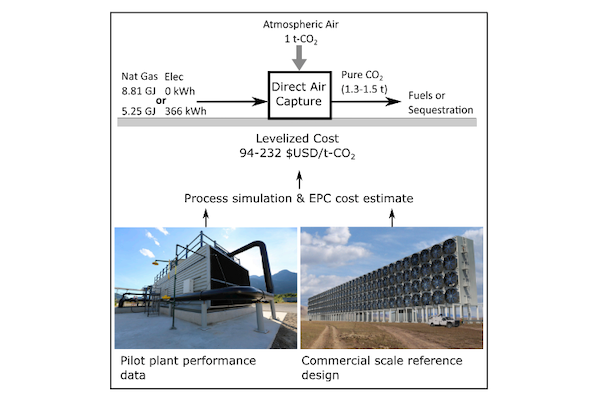
Carbon capture and storage and Carbon removal
Fossil fuel combustion has sent over 1.5 trillion tons of carbon dioxide into the atmosphere over the last century. That’s 250 tons for each person now alive, though responsibility for emissions is grossly unequal. Carbon Capture and Storage (CCS) can help reduce additional emissions, while Carbon Dioxide Removal (CDR) allows humanity to reduce carbon dioxide concentrations after emissions reach zero.
Carbon Capture and Storage (CCS) involves capturing CO₂ from industrial sources (e.g., cement plants and coal-fired electric power plants) and then sequestering that CO₂ deep underground in geological formations such as depleted oil and gas reservoirs. When I started working CCS in the 90’s, the focus was on using CCS to cut emissions from coal-fired electricity generation. CCS failed in that application: It was outcompeted by renewables and by the shift from coal to natural gas. Since then, the emphasis of CCS development has shifted to industrial sources.
Carbon Dioxide Removal (CDR) is the removal of CO₂ from the atmosphere. CDR is the only way to reduce the long-term climate warming caused by historical emissions. Cutting emissions—by decarbonizing through the use of renewables, nuclear power, or CCS—stops the accumulation of CO₂, which in turn will halt the rise in temperatures. But cooling the planet in this century will require either CDR or solar geoengineering.
CDR might be accomplished by a wide variety of methods, including changes to forestry and farming practices that increase stocks of organic carbon; enhanced rock weathering; adding alkalinity to the ocean to encourage storage of carbon as geochemical stable salts; or using direct air capture (DAC) or biomass energy with CCS to capture atmospheric CO₂, which is then disposed of underground using CCS technologies.
My work in CCS started in the early 90’s at CMU and peaked in the 2010’s while I was at UCalgary. Beyond my academic work, I served on various government panels, most memorably on the IPCC special report on CCS. My work on DAC started as an academic effort while at CMU, but shifted when I founded Carbon Engineering as a commercial DAC venture. After founding Carbon Engineering (covered here) I stopped academic work on CCS and CDR to minimize possible conflicts of interest. Since ending my involvement at Carbon Engineering, I have returned to work on open-systems CDR as part of my job as faculty director of UChicago’s Climate Systems Engineering initiative.
The following are some highlights of my work on CCS and CDR:
- Analysis of the economics of CCS in electricity markets with PhD student Tim Johnson and, with Peter Reinelt, a foray into stochastic-dynamic programming to explore the costs incurred by regulatory uncertainty.
- Work with Elizabeth Wilson, who joined me as a mid-career PhD from EPA, to understand the regulatory landscape for CO₂ storage, work that (I suspect) influenced the EPA’s eventual Class VI CO₂ injection well standard. Also worked on public perception of CCS with Wilson, Granger Morgan of Carnegie-Mellon University, and others.
- Jamie Rhodes and I were among the first to realize that carbon removal occurs when biomass energy (e.g., trees or agricultural waste) is used as fuel for a system making electricity or hydrogen with CCS. The net effect is carbon removal because atmospheric carbon captured as the trees grow can be moved into geological storage. This process now called, bioenergy with CCS (BECCS), was the first CDR technology to gain widespread visibility when it was used by integrated assessment models as a way to meet the 1.5 C. degree target. Jamie wrote the first PhD thesis on BECCS, and I pushed against considerable resistance to get BECCS embedded in the IPCC Special Report on CCS.
- Collaborated with Min Ha Dong on the value of CDR in a simple integrated assessment model; later work with PhD Student Josh Stolaroff extended this model to include DAC, leading me down the road to Carbon Engineering.
- Work with Yuri Leonenko and PhD student Hassan Hassanzadeh that found methods to accelerate CO₂’s dissolution a saline aquifers as a way to reduce storage risk.
- The Wabamun Area Sequestration Project (WASP), in which I formed a team including a geophysicist, a geologist, a reservoir engineer, a geomechanics expert, and others to study the potential for large-scale storage of CO₂ in saline aquifers. After more-or-less randomly choosing an saline aquifer to study, we found that a half gigaton of CO₂ could feasibly be stored using current methods. The study was one of many worldwide to show that large-scale CO₂ disposal can be done successfully and relatively inexpensively using existing technologies. I most enjoyed WASP’s swords-to-plowshares angle: A team with expertise in pulling hydrocarbons from the ground figured out how to reverse the process.


Fossil fuels without CO₂ emissions
Sinks, energy crops and land use: coherent climate policy demands an integrated analysis of biomass
Reservoir Engineering To Accelerate the Dissolution of CO₂ Stored in Aquifers